Hip Dysplasia — Hip Replacement: treatment in the Best Hospitals in the World
Treatment prices are regulated by national law of the corresponding countries, but can also include additional hospital coefficients. In order to receive the individual cost calculation, please send us the request and medical records.
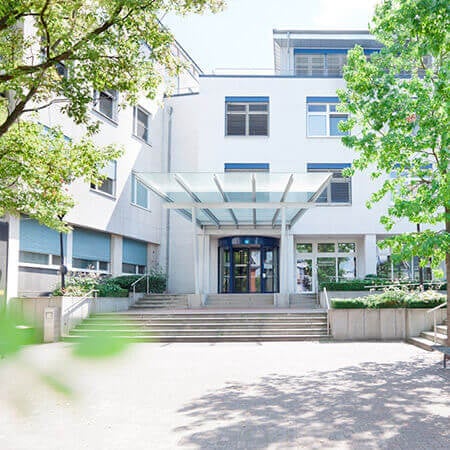
Department of Adult and Pediatric Orthopedics, Traumatology
The Department of Adult and Pediatric Orthopedics, Traumatology is part of the specialized Center for Musculoskeletal Disorders, whose medical team consists of highly qualified orthopedists, traumatologists, and spinal surgeons. The department offers modern diagnostics and treatment of the entire range of musculoskeletal diseases. The department's field of competence includes the treatment of injuries of varying severity. The therapeutic options cover both conservative measures and surgical interventions, which are mainly performed using sparing minimally invasive techniques. The treatment concept is based on the comprehensive approach – from the use of conservative methods to physiotherapeutic procedures the day after surgery.
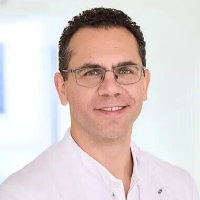


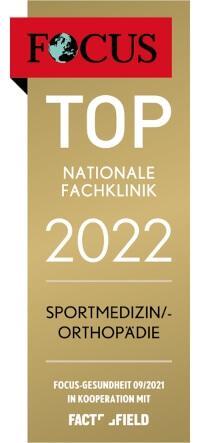
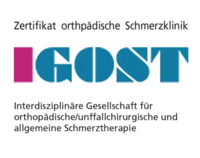
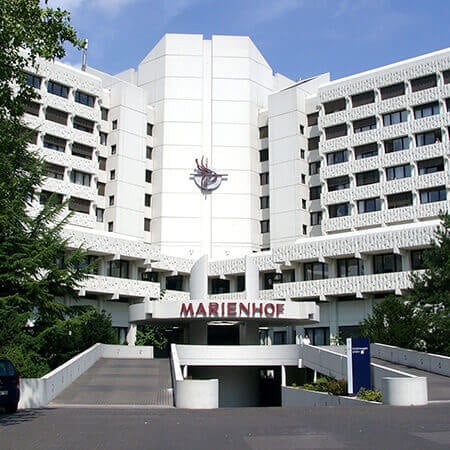
Department of Adult and Pediatric Orthopedics, Traumatology, Foot Surgery
According to the prestigious Focus magazine, the Department of Adult and Pediatric Orthopedics, Traumatology, Foot Surgery ranks among the top German medical facilities specializing in hip surgery! The department offers the full range of high-precision diagnostics and conservative and surgical treatment for diseases of bones, joints, muscles, ligaments, and tendons. One of the department's key areas of clinical practice is large joint arthroplasty. In this area, the department is awarded the prestigious endoCert certificate. The doctors in the department's operating rooms successfully perform knee, hip, and shoulder replacement surgery. Whenever possible, preference is given to minimally invasive joint replacement surgery. An important part of the work of the department's doctors is the treatment of orthopedic diseases and musculoskeletal injuries in children. The specialists at the medical facility also have long experience in helping patients with foot pathologies and deformities, including hallux valgus, hallux rigidus, hammer toes and claw toes, metatarsalgia, etc. The department's doctors have in their arsenal state-of-the-art equipment and modern treatment methods that allow for the achievement of excellent therapeutic results. More than 3,500 inpatients and about 17,000 outpatients are treated at the medical facility every year.
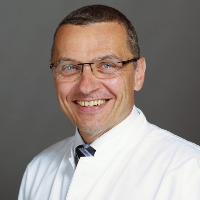

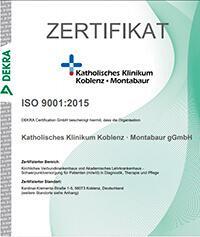

Department of Orthopedics, Traumatology, Spinal Surgery and Foot Surgery
According to the Focus magazine, the Department of Orthopedics, Traumatology, Spinal Surgery and Foot Surgery ranks among the top German medical facilities in treating orthopedic diseases and spinal surgery! The department carries out comprehensive examinations and effectively treats musculoskeletal diseases and injuries. The department has about 130 beds for its patient hospitalization. Doctors annually admit more than 4,000 patients for inpatient treatment. Several thousand surgical interventions of varying complexity are performed on the basis of the medical facility annually. The department offers the services of the certified Maximum Care Joint Replacement Surgery Center (EPZmax) and the certified Trauma Center. In addition, the department's specialists have vast experience in treating spinal and foot pathologies. The main goal of the department's doctors is to restore mobility and eliminate pain. The specialists always prefer an individual approach to each patient and his clinical case.
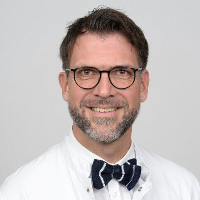


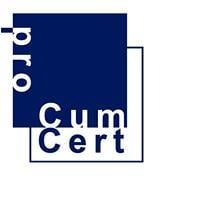


Hip dysplasia eventually leads to dysplastic coxarthrosis. Hip replacement is required for the treatment of this disease. This operation for dysplasia is considered technically complex. To obtain a good functional outcome, you can undergo it abroad. Booking Health will help you reduce the cost of treatment and fully organize your trip to one of the best hospitals in the world.
Content
- What is dysplasia?
- Causes
- Diagnostics
- Treatment principles
- What is the complexity of replacement surgery for dysplasia?
- Is it possible to perform successful replacement surgery?
- How is the surgery performed?
- Why is it worth undergoing replacement surgery abroad?
- Treatment in European hospitals with Booking Health
What is dysplasia?
Hip dysplasia is a congenital deficiency, which can lead to dislocation or subluxation of the femoral head. The International Classification of Diseases identifies three grades of severity of the disease:
- Grade 1 – pre-dislocation (dysplasia).
- Grade 2 – subluxation (the femoral head comes out of the glenoid cavity, but is still in contact with it).
- Grade 3 – hip dislocation (the most severe type, which accounts for 10% of cases).
The prevalence of dysplasia in the population is 3-5%. Every tenth person has a total hip dislocation. Coxarthrosis caused by hip dysplasia, which may require total hip replacement, will be diagnosed in 2-3% of the population during life.
The specificity of coxarthrosis in such patients is a large difference in the length of the limbs and development at a young age. Replacement surgery is usually used after 70-80 years, but in case of hip dysplasia, surgical interventions often have to be performed up to 50 years. It is extremely important for such patients to perform the operation reliably with a high-quality endoprosthesis. Whenever possible, it should maintain functionality throughout the life of a person so that he does not have to undergo revision hip replacement in the future.
In the case of hip dysplasia, pathological changes gradually occur in the surrounding tissues:
- The posterior hip muscle group, the abductors and the square muscle of the hip are shortened.
- The capsule of the joint takes the shape of an hourglass.
- The sciatic nerve and deep femoral artery are malpositioned, which can damage them during the hip replacement surgery.
- The spine suffers: lumbar lordosis (bending) increases and secondary lumbodynia (back pain) develops.
- Other limb joints are also damaged, primarily the knee, which is caused by the change in the biomechanical axis of the limb.
Both knee and ankle joints are deformed due to hip dysplasia. These are adaptive changes, which allow a person to walk. To a lesser extent, the changes affect the opposite knee joint.
The procedure improves function of the hip joint and walking ability.
Total recovery will take few months, while you’ll be able to walk in few days after the surgery.
Cost of treatment with total hip replacement is from €11,783. You can find other prices on the Booking Health website.
Total hip replacement is used for hip dysplasia.
The best hospitals in Europe are:
- University Hospital Rechts der Isar Munich
- University Hospital of Ludwig Maximilian University of Munich
- University Hospital Ulm
- University Hospital Frankfurt-am-Main
- Vitos Orthopedic Clinic Kassel
Causes
Hip dysplasia is 3 times more common in women than in men. The left side is affected 50% more often than the right one. In 20% of cases, both limbs are affected. Hereditary predisposition plays a certain role, although this is usually the result of abnormalities in the prenatal development not associated with genetics.
There are the following prerequisites for the development of the disease:
- Underdevelopment of the acetabulum.
- Muscle weakness in the hip joint.
- Breech presentation.
- Toxic effects on the fetus at the early stages of pregnancy.
Diagnostics
Hip dysplasia is often detected in the hospital. THe diagnostics involves the use of clinical methods. The doctors detect the symptom of a click (slipping) of the hip, its excessive rotation, shortening of the limb, and asymmetry of the skin folds. Limited abduction of the limb bent at the knee and hip joint is often detected as well.
To make the diagnosis, doctors use X-ray and ultrasound examinations. Computed tomography is also used to clarify it. It is a highly accurate diagnostic procedure, which allows the doctors to obtain a cross-section image of the hip joint.
Treatment principles
A dysplastic joint can develop normally if the necessary conditions are created. The doctors do not correct the hip dislocation within a single session, but use functional therapies for gradual reduction. They mainly use the functional splint. Prior to this, the child receives massage, physiotherapy, and stays in a Frejka pillow for 1 week to eliminate contracture (poor mobility) of the adductors.
Open (surgical) thigh reduction is performed only if it is not possible to gradually reduce it using a closed method before the age of 6 months.
The timely treatment avoids the development of dysplastic coxarthrosis. However, sometimes it is ineffective or initially unpromising: for example, in teratogenic (intrauterine) hip dislocation or severe violations of the ratio and shape of the components of the hip joint. In such cases, doctors perform surgical interventions.
Hip replacement is not the first choice therapy. Other operations with the preservation of the patient's own joint can also be used. Here are some of the surgical interventions for dysplasia:
- Myotomy (muscle dissection) to eliminate contracture.
- Open hip reduction (performed in the first year of life).
- Interventions on the pelvic and hip bones performed from the second year of life.
Many patients with hip dislocation have to undergo more than one surgical procedure during their life. They do not completely solve the problem, but only allow the patients to achieve functional improvements. Arthritis often progresses, so the doctors have to resort to replacement surgery. Such operations are avoided in children and adolescents, because no prosthesis can serve the patient forever, and sooner or later the patient needs revision intervention to replace it.
What is the complexity of replacement surgery for dysplasia?
Hip replacement for hip dysplasia is technically complex and not always successful. It is important to undergo it in a good hospital. In this case, you can expect that the functional outcomes will be good, and the risk of complications will be minimal.
After total hip replacement for dysplasia, complications are more common than in other types of replacement surgery:
- Improper fusion or non-union at the area of bone tissue dissection.
- Dislocation.
- Infection.
- Early aseptic loosening of the endoprosthesis.
- Damage to the sciatic nerve due to excessive limb lengthening.
- Muscle weakness and secondary neurological pain.
The greatest problem for doctors is the development of grade 3-4 coxarthrosis due to dysplasia of the hip. In such patients, the outcomes of replacement surgery are generally worse than in other types of osteoarthritis. The risk of dissatisfaction with the results of the operation is twice as high.
The following difficulties are associated with the features of the anatomical defect:
- Femoral head is dislocated upward by 4-5 cm.
- Acetabulum of the pelvic bone (the place where the head of the femur rotates) flattens, its walls atrophy.
- Total atrophy of the cavity with wigwam-shaped deformation is possible.
- Rotation in the femur.
- Very narrow and often deformed femoral canal.
- Deficiency of the abductor muscles of the hip.
Is it possible to perform successful replacement surgery?
Despite all the difficulties, the experience of European hospitals shows that successful hip replacement for hip dysplasia is possible. In most cases, even in such severe patients, doctors achieve good results.
To solve the problems caused by the deformation of the hip joint, doctors use various techniques: femoral shortening osteotomy, transposition (transfer) of the greater trochanter, bone grafting. In case of severe acetabular deformation, it is possible to create individual components of the endoprosthesis – they are manufactured on a 3D printer.
In severe cases, the surgical procedure is performed in two stages. Hip replacement is complemented by osteosynthesis to increase the length of the limb. The doctors often use bone cement and reinforcing rings.
How is the surgery performed?
The surgery is performed under general or spinal anesthesia. In the second case, the patient is conscious, but does not feel anything, since the sensitivity of the lower half of the body is switched off at the level of the spinal cord. This method of pain management has an important advantage: early activation of the patient is possible.
When performing the surgery, the doctor removes the patient's own joint and replaces it with the components of the endoprosthesis. It consists of the femoral and acetabular (pelvic) components.
The femur imitates the initial section of this bone. The component consists of a stem, a neck and a head. The pelvic component includes a cup and liner. To implant them, the doctor can use either cement or cementless fixation. As a rule, when performing surgery for coxarthrosis, the doctors resort to the cementless method, but in case of dysplasia, cement is used in many patients to fix the acetabular component.
Upon completion of the surgical procedure, the doctor sutures the wound and inserts drains. These are thin pipes through which liquid flows. They are removed after 1-2 days.
After the operation, the rehabilitation begins immediately. If the surgical intervention was carried out under general anesthesia, then the patient's activation is possible the next day. The first time he gets out of bed with the help of the medical staff, but then he learns to walk on his own. The person moves with crutches or walkers. At first, there is no support on the sore leg, but after a week, part of the weight can be transferred to it. By the end of the third week, the load reaches half of the maximum. Full load in a cementless fixation is recommended only by the end of 2 months, but if the prosthesis is fixed on cement, then full load is possible after 1 month.
In the first days after the operation, rehabilitation procedures are often carried out in bed. A person can receive massage, physiotherapy, and do physical exercises. The goal of training in the first 2 weeks is to improve blood circulation and reduce swelling. Passive workout of the joint is not required: it immediately has perfect mobility, and the motor function of the limb depends solely on the state of the muscles.
After 2-3 weeks, a person can go to a rehabilitation center. From this moment on, the rehabilitation becomes more intensive. A person learns to walk without crutches, and works on strengthening muscles. The load is gradually increased. The patient forms the correct walking stereotype, and by the end of 2-3 months he feels absolutely healthy. He no longer suffers from pain and lameness, and can lead an active lifestyle. Full recovery of muscle strength and coordination of movements may take another 2 months.
Why is it worth undergoing replacement surgery abroad?
Hip replacement surgery in the patients suffering from hip dysplasia is technically complex. The treatment results differ significantly from hospital to hospital. It is better to undergo the surgery where you are most likely to get a good and reliable result with minimal risk of complications. Although the cost of treatment will be higher, you will save money in the long run, since you will not need to undergo surgery again if the treatment is initially good.
Here are several reasons for you to undergo treatment abroad:
- Europe has specialized orthopedic centers whose doctors have vast experience in the replacement surgery for both early stages of dysplasia and after the development of dysplastic coxarthrosis.
- The patients of any age can count on the successful treatment, even adolescents and children, if necessary.
- Reliable results of the operation: the implanted endoprostheses will serve for decades, and the risk of loosening is minimal. This is especially important for young patients in order to avoid revision surgery or at least reduce the number of surgeries performed.
- Doctors implant high-quality prostheses with high wear resistance and good functionality.
- Artificial joints are implanted through short incisions, which reduces the early rehabilitation period.
- The replacement of two joints at once is possible, including a single-stage one, which reduces the total time spent in the hospital and rehabilitation center.
- The success of replacement surgery is achieved even in the most severe cases.
- The risk of developing both early and long-term complications is minimal.
- The use of fast-track rehabilitation programs to reduce the hospitalization period and further reduce the risk of complications.
- High-quality pain management, care and symptomatic treatment in the postoperative period.
European hospitals are well equipped and doctors use state-of-the-art technology. The world's leading orthopedic centers employ specialists who have already successfully performed hundreds of surgeries on patients with hip dysplasia.
Treatment in European hospitals with Booking Health
To undergo treatment in European hospital, please use the services of Booking Health. On our website, you can see the cost of treatment in different hospitals, compare prices and book a medical care program at an affordable price.
Please contact the Booking Health specialists to undergo treatment in European hospital. Here are our benefits for you:
- We will choose the best European hospital whose doctors specialize in hip replacement for hip dysplasia.
- We will help you overcome the language barrier, establish communication with your attending physician.
- We will reduce the waiting time for the medical care program and book a doctor's appointment on the most suitable dates.
- We will reduce the price. The cost of treatment in European hospitals will be decreased due to the lack of additional coefficients for foreign patients.
- We will take care of all organizational issues: documents for entering the country, transfer from the airport, hotel, interpreter, etc.
- We will prepare a medical care program and translate medical documents. You do not have to undergo previously performed diagnostic procedures.
- We will provide communication with the European hospital after the completion of the medical care program.
- We will organize additional medical examinations, treatment in European hospitals, if necessary.
- We will buy medicines abroad and forward them to your native country.
- We will help you keep in touch with the European hospital after treatment.
Booking Health makes treatment in European hospitals easier, faster and cheaper. We will fully organize your trip, and you will only have to focus on restoring your health.
Authors: Dr. Nadezhda Ivanisova, Dr. Sergey Pashchenko

